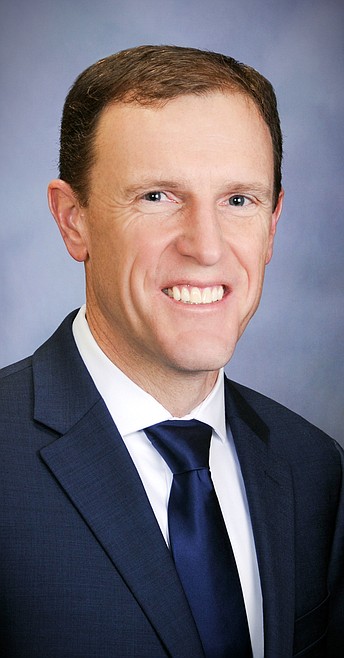Where did the money come from?
A major task each legislative session is creating and approving a plan for how we will spend our state tax dollars in the upcoming year. The legislative session typically ends in late March. The budget year starts in July and runs through the following June. When we finish this session in the next month or so, we will have a plan in place for Fiscal Year 2022 which starts this coming July 1.
The first part of setting a budget is anticipating the revenues for the following year. State revenue consists primarily of income tax and sales tax. The state income tax rate is 6.925 percent. The sales tax rate is 6 percent. The amount of revenue those two taxes generate is dependent on the level of economic activity of the state during the year. How much people earn during the year and how much they buy determines total tax revenue and therefore the total budget. We make a best guess of what will happen during the upcoming year, then set spending levels to match. For Fiscal Year 2022, we are projecting $4.4 billion in state tax revenue. The total Idaho state budget with federal funding included will be close to $10 billion.
In an unexpected economic downturn, such as the recession in 2008, revenue does not meet expectations. This situation requires budget adjustments during the year to make sure spending does not exceed revenue. In Fiscal year 2021, our current fiscal year, actual revenues are greatly outpacing anticipated revenue.
There are three primary contributing factors for the additional revenue in this budget year. First, at the beginning of a period of uncertainty last spring, budget reductions were put in place as it looked very likely that we would enter an extended period of reduced economic activity. The five percent budget reduction put in place by the Governor resulted in approximately $200 million in reduced spending. Second, the federal government has provided higher levels of Medicaid funding as well as other funds for public safety costs. These federal funds also total approximately $200 million. Finally, economic activity has been higher than expected. More sales tax collections and more income tax withholding have resulted in greater than $200 million of additional revenue. Combined, these three revenue changes now add up to nearly $700 million in taxpayer money that is not obligated to any specific use.
All the money described above is available for use this year, but it may not show up again in years to come. In other words, this is one- time state revenue, not ongoing. The plan to utilize the additional revenue is three-pronged… tax relief, capital investments in transportation and other infrastructure including broadband internet, and savings for the next economic downturn. All three are planned as one-time expenditures to match the one-time nature of the revenue.
In addition to the deliberations about FY2021, we are working on a plan for future years to provide more ongoing transportation funding for state highways as well as local road systems. I hope to have details in the upcoming weeks.
It was my honor this week to present House Concurrent Resolution 3 on the Senate floor. The resolution memorializes the significance of a new submarine of the United States Navy, SSN-799. The USS Idaho is a Virginia-class nuclear-powered, fast attack submarine currently under construction. The state of Idaho is particularly important to the Navy submarine fleet. The Acoustic Research Detachment in Bayview plays a part in the development of our submarine fleet through acoustic testing in Lake Pend O’reille. Near Idaho Falls, the Idaho National Laboratory has been an integral part of the Naval Nuclear Propulsion program since its beginnings in the early 1950’s. We now have two submarines with Idaho names. The USS Boise is a Los Angeles-class fast attack submarine commissioned in 1992 and still serving the nation. The USS Idaho will be the newest of the fleet in 2023.
Thank you for the opportunity to represent the community at the state level. I look forward to hearing concerns and input on legislative actions. The easiest way to track legislation is on the legislative website — legislature.idaho.gov. Email is the best way to reach me.
Sen. Jim Woodward represents District 1, Bonner and Boundary counties, in the Idaho Senate. He can be reached at jwoodward@senate.idaho.gov .

